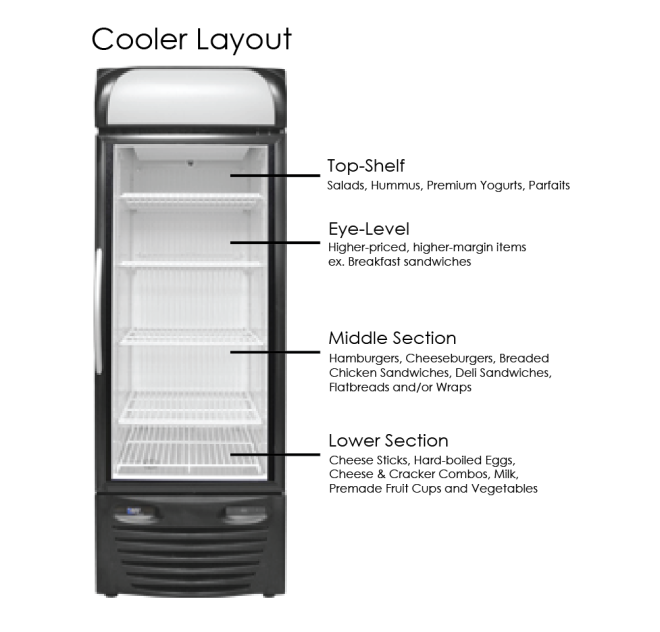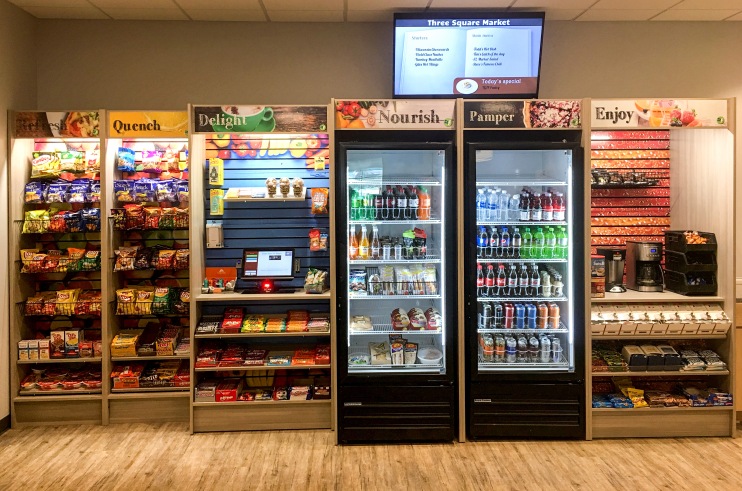In a great blog series about the Four P’s of micro markets from 2016, Tim Sanford and Emily Jed so into great depth to describe and explain each of the P’s as presented by multiple operators at the ACE show in 2015.
The second P stands for Product. We’ll break down the details for you here:
Knowing as we do that micro markets demand a significant increase in products, it’s easy to understand why presenter, James Bourne, says “You need your distributors to understand [micro markets]. Thus, supplier management is an essential component of successful micro market operations.”
The definition of Supplier Managment is the various acts of identifying, acquiring and managing the products and/or resources needed to run your business.
Current consumer demands and understanding what your specific customers want is imperative to your micro market success. We would suggest that you use and encourage the use of the suggestion button on Three Square Market kiosks. If you are looking for great suggestions try adding an incentive for products information!
Prevalent Consumer Demands:
Healthier, alternative snacks: Ranging from baked and low-carb selections to gluten-free, organic or all-nature products. Distributors continue to work to bring these products into the industry, but availability can be difficult to source based on region. Bourne suggests, “Operators can do their homework to compile market information that can persuade a distributor to stock desirable new items.”
Brands Matter: 61% consider their brand of choice to be an important attribute of a snack. 73% of consumers look for a favorite brand when choosing a snack.
Sales Surges: An IRI for calendar years 2011 to 2014
- Candy 33%
- Salty Snacks 32%
- Pastry 16%
- Meat Snacks 13%
- Nuts & Seeds 9%
“Bourne emphasized that precise inventory control is essential in micro markets. Each market should be inventoried at least monthly, and drivers should carry tablet computers with scanners for best, speed and accuracy. Each inventory visit should be followed by preparation of a ‘no scan items’ report, which helps to identify slow-moving items — 15% of market inventory. ‘Watch this,’ he warned. ‘Don’t let your market get sparse; they can’t look unattended.'”
Let us interject here because A) we totally agree and B) Three Square Market has made this process even easier! Check out our intelligent inventory management that will identify each of your products movement/pattern in each market. Also, learn how you can manage your inventory via a smartphone during market visits!
Planograms are essential to micro markets. The object being to apportion space to a product category on the basis of its sales volume. Need a starting point? You can use vending sales as a good place to begin your market planogram and then expand to the added products you’d like to carry.
Bourne said, “Be sure to carry strong local and regional brands, as well as the national best-sellers. … Consumers will search for these products.”
Understanding Placement of Products: (more p’s)
Placement of products in display cases is important. Bourne says, “You should place your top sellers on the bottom shelves,” and goes on to say, “Place impulse, discontinued and high gross-profit items on the top shelves; and put new items at eye level, ideally in the ‘first’ position — closest to the door handle — because that’s where the customer looks first.”
Planograms should be refreshed at least quarterly. Bourne tells us, “Our goal when we do this is to eliminate 10 to 15 items, and introduce 10 to 15 new ones.” Updating promotions in accordance with the market refresh can boost sales and invite new market users.
Pre-kitting can not only make your market restock more efficient but also will free up enough time for your driver to check inventory, ensure cleanliness of the market, face market products, and maximize your market potential.
When dealing with portion sizes for your products, Bourne suggests looking at demographics, stating that “Males tend to want large sandwiches; women often want smaller ones … we try to provide something for everyone.”
Fresh Food Programs:
“Bourne emphasized that a good fresh-food program can be essential in realizing the full earnings potential of a micro market. ‘Fresh food represents 30% of overall sales,’ he reported.”
Fresh food in your micro market is shown to draw added customers to your market and can lead to the increased value of the average purchase. Our writers add, “For best results, it’s important to rotate menu options, slot in seasonal and holiday-themed selections and feature regional favorites, when possible.”
Again, it’s important to understand that supply management of your fresh food is incredibly important and attention to detail in this area is required.
Micro market operators can make price changes in real-time. Bourne gives the example, “Anything that sells for $3 or more and has a sell-by date of today can be discounted to $1.99. You could offer 10% off all sandwich sales on Fridays.”
Another interject … try using our expiration management system to make sure you are staying on top of your expiring products so that you can make these price changes without missing the boat!
Bourne describes a food cooler and freezer layouts … We’ve made images to make it easier to show you!


Destination Grouping:
“Bourne said, the operator should design a micro market installation with ‘destination zones’ in mind. Thus, a ‘breakfast zone’ might position the coffee brewer in proximity to display containing pastry, and an ‘impulse zone’ near the checkout kiosk can feature gum and mint selections.”
Our writers suggest “for purposes of positioning and promotion, it can be useful to remember that the ‘dayparts’ of a typical micro market operation are breakfast, a morning snack (9-11 AM), lunch, an afternoon snack (2-4 PM), and dinner/ride home.
“Bourne concluded by pointing out that snacks, food, and beverages sold in convenience stores … not dissimilar to the one that patronizes micro markets. Both rely very largely on preportioned single-serving products, and he suggested that a solid starting-point for thinking about the expanded variety of items needed to keep a micro market interesting to patrons is to study the data on c-store performance and sales trends published by market research organizations.”
Bottomline:
Your product selection is a major part of your micro market success. Be creative and flexible with your products and planogram, and always keep working on your markets!




















